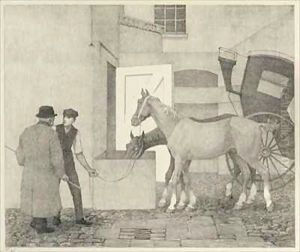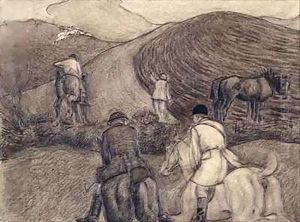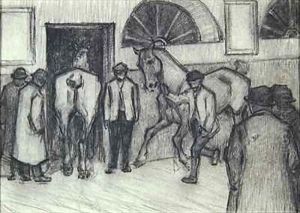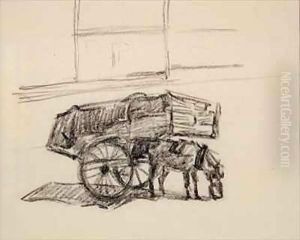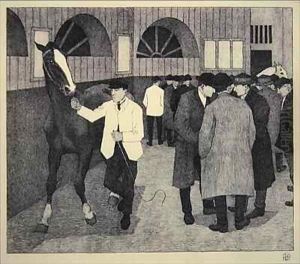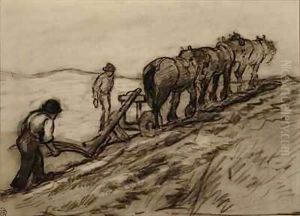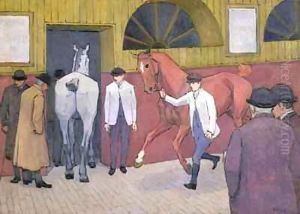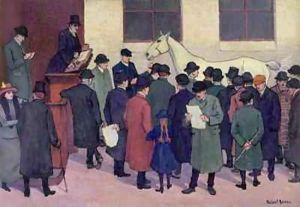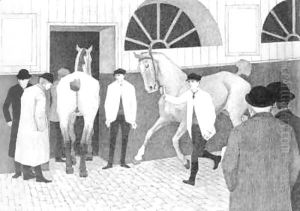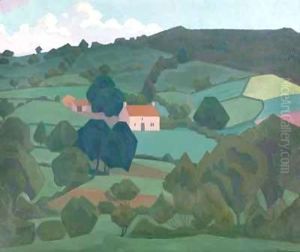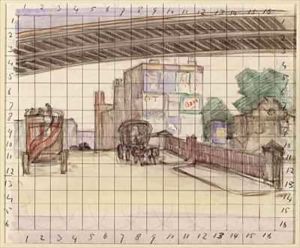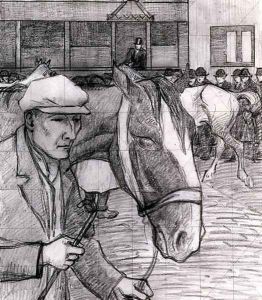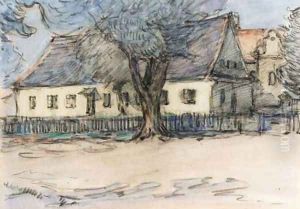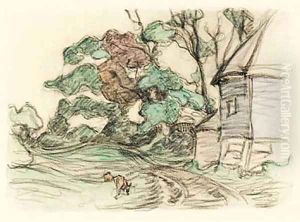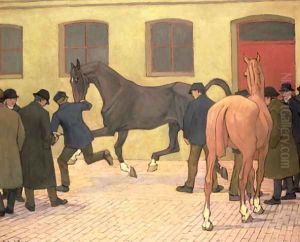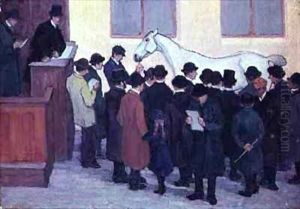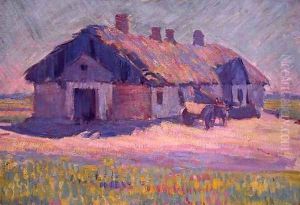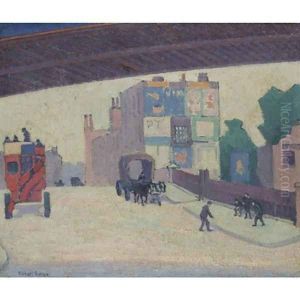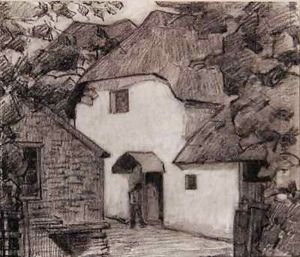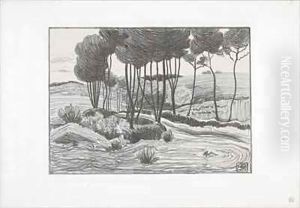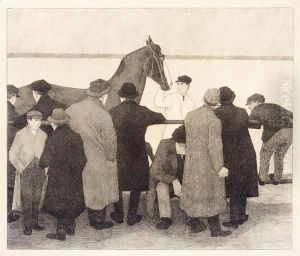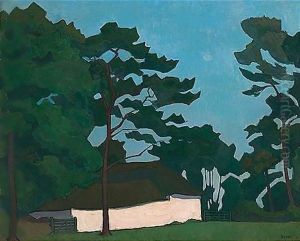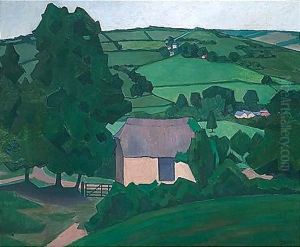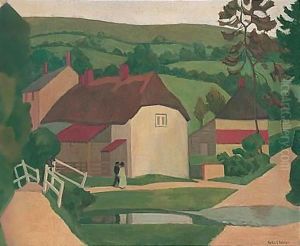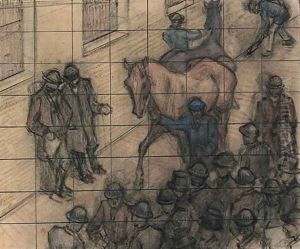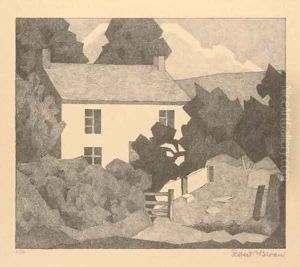Robert Polhill Bevan Paintings
Robert Polhill Bevan was a British painter, draughtsman, and lithographer. He was born on August 5, 1865, in Brunswick Square, London, to a wealthy family. His father, Robert Cooper Lee Bevan, was a banker, which allowed Bevan the financial freedom to pursue his artistic interests. He was educated at Westminster School and later studied art at the Académie Julian in Paris under William-Adolphe Bouguereau and Tony Robert-Fleury, which was a pivotal experience in his development as an artist.
Bevan's early work was influenced by the French Impressionists, and he was particularly drawn to the rural landscapes and scenes of agricultural life. After his return to England, Bevan became associated with a group of artists known as the Camden Town Group, which was founded in 1911. The group was named after the area of London where they met and included such artists as Walter Sickert and Harold Gilman. They were united by a desire to depict the realities of urban life in London and were influenced by the bold colors and techniques of Post-Impressionism.
Although Bevan was less known than some of his contemporaries, his work was distinctive for its vibrant palette and dynamic compositions. He often painted horses and scenes of farm labor, bringing a sense of rhythm and movement to his subjects. Bevan's interest in the representation of horses can be traced back to his family's connection to the horse trade. He also produced lithographs and was a founding member of the Cumberland Market Group, which focused on depicting London's disappearing horse fairs and markets.
Throughout his life, Bevan struggled with the commercial aspects of being an artist, often finding it difficult to sell his work. Nevertheless, he continued to paint and exhibit with various artist groups. In 1913, he became a member of the London Group, a larger association of artists that had evolved from the Camden Town Group.
Bevan's later years saw a decline in his artistic output due to ill health. He died on July 8, 1925, in London. His work has since gained recognition for its contribution to British Post-Impressionism and the depiction of early 20th-century London life. Today, Bevan's paintings can be found in various art galleries and collections, including the Tate Gallery in London, which holds several of his works.

